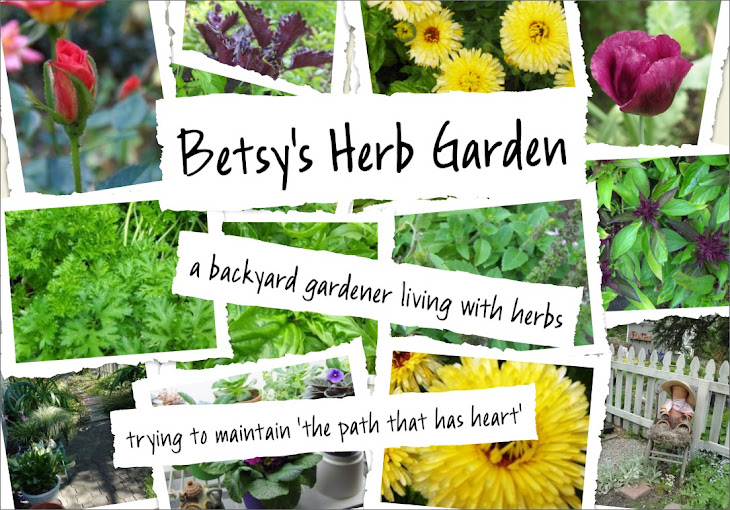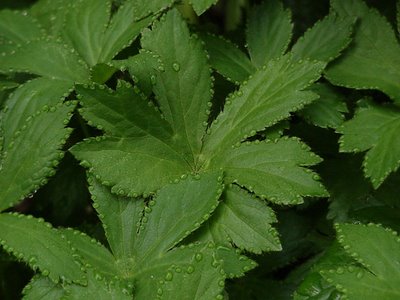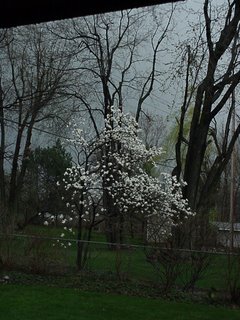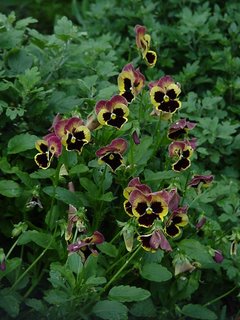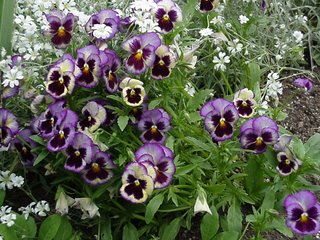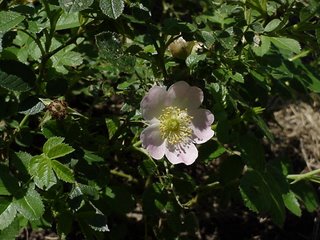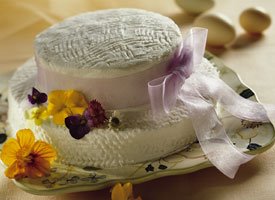
The folowing article was posted at Vanity Fair
Fifty Ways to Help Save the Planet
What you can do
The problem is so vast and the urgency so great that advice which suggests you turn off the tap while brushing your teeth or switch off lights and standbys when they are not needed or go vegetarian for one day a week seems, well, ridiculous.
Global warming is probably the greatest threat our species has ever faced. The sheer scale of the processes under way in the atmosphere and the oceans makes it hard not to view anything an individual does to reduce emissions as being too little too late.
Not true. The astonishing fact is that each of us can have an immediate impact on the production of greenhouse gases, and if enough of us act together in these minor ways, the cumulative effect will be dramatic. That's because so much of the way we live our lives is wasteful and, to put it bluntly, thoughtless. It takes nothing to switch off a lamp, unplug the phone charger, take a shorter shower, cook without pre-heating the oven, skip the pre-wash part of the dishwasher cycle, or, often, walk or bike instead of drive. And they all save money, which is one of the rather striking things about reducing your carbon footprint—the standard way of measuring the CO2 emissions each person is responsible for.
Some of the suggestions that follow may involve a little more effort—recycling, ditching plastic bags, and fixing leaky faucets and toilets; others require you to spend money—insulating your home, installing solar panels, or buying a fuel-efficient car. Even with these, however, there is almost always an eventual payback in terms of reduced bills.
The overwhelming and heartening point about the ideas here is that, if adopted by large numbers of people, they will have an immeasurable effect. When it comes down to it, the continued rise in carbon emissions is a matter of individual conscience: each of us can and should do something, however small. In 5 or 10 years' time that thought, together with everything written here, should be second nature to us. Ladies and gentlemen, this little booklet is the future—a more ingenious, more satisfying, and less wasteful future. Welcome to it. —HENRY PORTER
Reporting for V.F.'s Green Guide by DAISY PRINCE and EMILY BUTSELAAR
1. LIGHTBULBS MATTER Switch from traditional incandescent lightbulbs to compact fluorescent lightbulbs (C.F.L.). If every American household replaced one regular lightbulb with a C.F.L., the pollution reduction would be equivalent to removing one million cars from the road. A 30-watt C.F.L. produces about as much light as an ordinary 100-watt bulb. Although the initial price is higher, C.F.L.'s can last 12 times as long. C.F.L.'s are available at most home-improvement stores and at bulbs.com.
2. DITCH PLASTIC BAGS Californians Against Waste (cawrecycles.org), a nonprofit environmental advocacy group, estimates that Americans use 84 billion plastic bags annually, a considerable contribution to the 500 billion to one trillion used worldwide. Made from polyethylene, plastic bags are not biodegradable and are making their way into our oceans and waterways. According to recent studies, the oceans are full of tiny fragments of plastic that are beginning to work their way up the food chain. Invest in stronger, re-usable bags, and avoid plastic bags whenever possible.
3. RINSE NO MORE According to Consumer Reports, pre-rinsing dishes does not necessarily improve a dishwasher's ability to clean them. By skipping the wash before the wash, you can save up to 20 gallons of water per dishload. At one load a day, that's 7,300 gallons over the course of the year. Not to mention that you're saving time, dishwashing soap, and the energy used to heat the additional water.
4. FORGET PRE-HEATING Ignore cookbooks! It is usually unnecessary to pre-heat your oven before cooking, except when baking bread or pastries. Just turn on the oven at the same time you put the dish in. During cooking, rather than opening the oven door to check on your food, just look at it through the oven window. Why? Opening the oven door results in a significant loss of energy.
5. A GLASS ACT Recycle glass (think beer bottles, jars, juice containers) either through curbside programs or at community drop-off centers. Glass takes more than one million years to decompose; Americans generate almost 13 million tons of glass waste a year. Glass produced from recycled glass reduces related air pollution by 20 percent and related water pollution by 50 percent. Go to earth911.org for local recycling information.
6. BANKING ON THE ENVIRONMENT Want to have a more energy-efficient home or office? Save green by being green. Purchase appliances and electronics with the Energy Star certification. Begun in 1992 by the E.P.A. to rate energy-efficient computers, the Energy Star program today includes more than 40 product categories, and it also rates homes and workplaces for energy efficiency. Energy Star estimates that, with its help, Americans saved enough energy in 2004 to power 24 million homes, amounting to savings of $10 billion. To learn more about Energy Star, visit energystar.gov.
7. HANG UP YOUR DRYER It goes without saying—clothes dryers are huge energy gluttons. Hints to reduce energy use: Clean the lint filter after each load (improves air circulation). Use the cool-down cycle (allows clothes to finish drying from the residual heat inside). Better yet, abandon your dryer and buy some drying racks, if you don't have a clothesline. Generally, clothes dry overnight.
8. GET A GOLD LAUNDRY STAR An Energy Star–qualified washing machine uses 50 percent less energy and could reduce your utility bills by $110 annually. Standard machines use about 40 gallons of water per wash; most Energy Star machines use only 18 to 25 gallons, thus also saving water. Whenever possible, wash your clothes in cold water using cold-water detergents (designed to remove soils at low temperatures). And do your laundry only when you have a full load. If you must do a small load, adjust the water level accordingly.
9. GREEN PAINT Most paint is made from petrochemicals, and its manufacturing process can create 10 times its own weight in toxic waste. It also releases volatile organic compounds (V.O.C.'s) that threaten public health. (V.O.C.'s are solvents that rapidly evaporate, allowing paint to dry quickly.) They cause photochemical reactions in the atmosphere, leading to ground-level smog that can cause eye and skin irritation, lung and breathing problems, headaches, nausea, and nervous-system and kidney damage. The best alternative? Natural paints. Manufactured using plant oils, natural paints pose far fewer health risks, are breathable, and in some cases are 100 percent biodegradable. Remember: Never throw your paint away. Check out Earth 911's "Paint Wise" section for re-use programs in your community; earth911.org.
10. BUILD GREEN Before embarking on any home remodeling, make sure your architect has green credentials. Although there is no national organization of green architects in the U.S., that doesn't mean you can't get an architect who will build along sustainable lines. Ask where he or she sources materials, and request that energy-saving devices, such as solar paneling, be installed. Visit directory.greenbuilder.com or environmentalhomecenter.com for more green-building information.
11. GET A GREEN ROOF A green roof is more than simply a roof with plants growing on it. It functions like a "breathing wall," consuming carbon dioxide from the atmosphere and emitting oxygen. Green roofs generally use low-maintenance, drought-resistant plants. Vegetation is planted or laid down as pre-vegetated mats on a thin layer of soil. More intensive green-roof systems may contain trees and larger plants, but these require deeper soil and are more expensive. One of the biggest benefits of a green roof is water management: it can absorb more than 50 percent of rainwater, thereby reducing runoff, a major source of pollution in our waterways. Plus, it can help reduce air-conditioning costs during the hot summer months. The vegetation looks after itself through the seasons and creates a habitat for insects, which, in turn, provide food for birds. Green roofs can also last more than twice as long as conventional rooftops. They look better too. For more information, visit greenroofs.com.
12. PLAY IT COOL Avoid placing your air conditioner next to a TV, lamp, or other electrical appliance that generates heat. A heat source will confuse the unit's thermostat, causing it to misread how hot the room is and make the air conditioner run longer than it should. You can also program an air conditioner to start running 30 minutes before you arrive home (as with heating). There is no need to cool a home if no one is in it.
13. FOOD MILES MATTER Food is traveling farther than ever. Once upon a time people ate seasonally—artichokes in the winter, cherries in June. Now you can buy most fruits and vegetables practically year-round. The average American meal contains ingredients produced in at least five other countries. The transportation of food and agricultural products constitutes more than 20 percent of total commodity transport within the U.S. To help reduce CO2 emissions (released from trucks, airplanes, and cargo ships), it's best to buy food that's in season, organic, and grown locally. Go to ams.usda.gov/farmersmarkets to find the farmers' market nearest you.
14. GO VEGETARIAN ONE DAY A WEEK To produce one pound of beef requires 2,500 gallons of water—that's 40 times more water than is used to produce a pound of potatoes. Before buying beef, think about the immense cost of energy used to raise cattle and to transport meat to your supermarket shelf. Besides all this, cows consume enormous amounts of antibiotics and are a prodigious source of methane, which is the number-two greenhouse gas; livestock are responsible for almost 20 percent of the methane in the atmosphere.
15. BUY EGGS IN CARDBOARD CARTONS Cardboard egg cartons are normally made from recycled paper, which biodegrades relatively quickly, and are also again recyclable—Styrofoam or plastic cartons take a much longer time to biodegrade and their manufacture produces harmful by-products.
16. DRINK SHADE-GROWN COFFEE Shade-grown coffee is for the birds, literally. According to coffeeresearch.org, about 150 species of birds live on shade-grown-coffee farms, while only 20 to 50 inhabit full-sun farms. With increased demand for cheap coffee, many Latin American growers have moved toward full-sun plantations, clearing the habitat of numerous native birds and increasing the use of pesticides and fertilizers. By drinking shade-grown coffee, you can help bird habitats and reduce the need for farming chemicals. Shade-grown coffee beans can be purchased at many grocery stores. Starbucks offers shade-grown coffee as well.
17. SAVE WATER INDOORS A typical American household uses 350 gallons of water each day. About half that—175 gallons—is used indoors (toilets consume about 30 percent of the indoor total). Unnecessary water usage comes in the form of leaks. Fixing leaky faucets and toilets is a quick and easy way to conserve water. A steady faucet drip can waste 20 gallons of water a day. Leaky toilets are even worse, wasting upward of 100 gallons a day. Since toilet leaks are generally silent, check for them regularly by removing the tank cover and adding food coloring. If the toilet is leaking (and 20 percent of them usually are), color will appear in the bowl within 30 minutes.
18. TAKE SHOWERS, NOT BATHS The average American household consumes about 60 gallons of water a day from showers and baths. To reduce this number, take quick showers and install a low-flow showerhead that uses fewer than 2.5 gallons of water per minute, as compared to about 5 gallons with an older showerhead. Baths are relaxing, but it can take 50 gallons of water to fill a tub.
19. STOP THE WATER By leaving the water running while you brush your teeth, you can waste 150 gallons of water per month—that's 1,800 gallons a year! Turning the water off while you brush can save several gallons of water per minute. Also pay attention to this water-saving principle while shaving or washing your face.
20. INSULATE YOUR HOUSE Good insulation is one of the best ways to reduce your heating bills and cut your CO2 emissions. Heating and cooling make up 50 to 70 percent of energy use in the average American home. Also, replace old windows and be sure to seal holes and cracks in your house with weather stripping or caulk. A well-insulated house can prevent hundreds of pounds of CO2 emissions per year and can cut your heating and cooling bills by up to 20 percent. For more information, visit eere.energy.gov/consumer/tips/insulation.html.
21. TURN YOUR THERMOSTAT DOWN ONE DEGREE If you turn your thermostat down by one degree, your heating costs will decrease by about 3 percent. Turn it down five more degrees for four hours a day and reduce your heating bills by almost 6 percent. If you're going to be away for the weekend or out in the evening, turn your thermostat down. It's not true that reducing the temperature means it will take more heat to bring it back up to a warm level (unless you have a heat pump in your home). Also, turn the heat down if you are throwing a party—every guest will be the equivalent of a 100-watt heater.
22. DON'T BE A BUTT TOSSER About 4.5 trillion cigarette butts are littered worldwide each year—making them the most-littered item. The myth that cigarette filters are biodegradable is just that, a myth. Although the filters do eventually decompose, they release harmful chemicals that enter the earth's land and water during the decaying process. There is nothing earth-friendly about the breakdown. If you must smoke, carry a 35-mm. film canister to store your used butts in until you can properly discard them.
23. DON'T JUST DUMP Envelopes come in huge quantities for free every day. If you are careful when opening letters, you can use the envelopes again by simply putting a label over the original address. This saves money and trees, while reducing waste. Try to re-use jars and plastic containers—for example, when taking your lunch to work. (Doing so prevents waste, and making your food at home is less expensive than the alternative.) Ask your office manager to buy re-usable mesh coffee filters instead of bleached paper ones, which may contain dioxins. They are tree-free and should save your company money.
24. AVOID DISPOSABLE GOODS Institute a mug policy in your office. Americans throw away some 25 billion polystyrene cups every year, most of which end up in landfills. Refill your water bottles once or twice, and make your coffee in a ceramic mug. If you bring in cutlery from home, you will also cut down on those pesky plastic forks, knives, and spoons.
25. GROW YOUR OWN GARDEN In 1826, J. C. Loudon wrote in An Encyclopaedia of Gardening, "For all things produced in a garden, whether salads or fruits, a poor man that has one of his own will eat better than a rich man that has none." To start a vegetable garden costs nothing but a few packs of seeds and rudimentary garden implements, and it saves enormous amounts of money, to say nothing of the food miles and the packaging that go into supplying you with fresh fruits and vegetables. Of course, a vegetable garden is only productive for part of the year, but it is amazing how long that growing season lasts and how much you can produce from one small patch.
26. BUY RECYCLED PRODUCTS There has to be a market for products made with recycled goods. Support this movement by purchasing recycled goods—you will save virgin materials, conserve energy, and reduce landfill waste. Recycled paper products include toilet paper (which is no longer scratchy, like it used to be), copy paper, paper towels, and tissues. Look for garbage bags and bin liners labeled "recycled plastic," and buy recycled toner cartridges for your fax machines and printers.
27. PLANE BETTER Air travel is currently responsible for 3.5 percent of the global-warming gases from all human activity and is growing fast. Cargo transport by air is increasing by about 7 percent annually and passenger air travel is up in the last few years by between 4 and 7 percent. The impact of air travel is enormous; a round-trip between New York and Los Angeles emits one ton of CO2 per passenger. (To determine CO2 emissions for your next flight, go to co2.org.) Try to limit the number of flights you take. If you're traveling within a country, why not take a train? (Air travel releases at least three times more carbon dioxide into the atmosphere than rail travel does.) If you're planning a business trip, consider whether a video linkup or a conference call will suffice.
28. CARBON OFFSETTING Air traffic is the fastest-growing source of greenhouse-gas emissions, so when you do fly, consult a carbon-offsetting organization such as Climate Care to "carbon-offset" your journey. Climate Care determines your flight's emissions and the cost to offset the CO2. For example, to offset that round-trip flight between New York and Los Angeles, you would pay about $10 to Climate Care, which invests in forestry and energy-efficiency projects. For more information, visit climatecare.org.
29. SWITCH TO GREEN POWER The leading cause of industrial air pollution is electricity production. According to the American Lung Association, more than 50,000 Americans die each year from air-pollution-related causes. If available, get your electricity from renewable energy sources such as wind, sun, water, and biomass, all of which generate electricity with fewer environmental impacts. With utility companies in 35 states offering green-power pricing plans, around half of all electricity consumers could buy green, yet only half a million do. Does green power cost more? Yes, but barely. For example, New York's Con Edison charges an additional one-half cent per kilowatt-hour for its green-power products. To see if your energy provider offers green-power options, visit eere.energy.gov/greenpower.
30. STANDBY NO LONGER Electricity "leaks" are no laughing matter. Televisions, video and DVD players, cable boxes, and other electronic equipment found in nearly every American home are wasting huge amounts of energy. When these devices are left on standby (the equivalent of "sleep" mode for computers) they use about 40 percent of their full running power. Every year, the energy wasted in this way is the equivalent of the annual output of 26 power plants. To avoid the drain of these "energy vampires," plug them into a power strip and turn it off when they are not in use.
31. TURN OFF YOUR CHARGERS Most cell-phone chargers continue to draw electricity even when the phone isn't plugged into it. If your cell-phone charger averages five watts per hour and is plugged in all the time, that means a total of more than 40 kilowatt-hours every year, or about 93 pounds of CO2. The same problem applies to your other electronic equipment—your laptop, iPod, digital camera, and BlackBerry. Unplug all your chargers when they are not in use.
32. RECYCLE YOUR BATTERIES Although the number of electrical gadgets that use disposable batteries is on the decline, each person in the U.S. discards eight batteries per year. Overall, Americans purchase nearly three billion batteries annually, and about 179,000 tons of those end up in the garbage. Batteries have a high concentration of metals, which if not disposed of properly can seep into the ground when the casing erodes. Avoid disposable batteries by using your outlets whenever possible. If you can't do without batteries, use rechargeable and recycled ones. You should also have your batteries collected and recycled. Go to rebat.com for a list of companies that participate in battery reclamation.
33. TURN OFF YOUR COMPUTER WHEN YOU LEAVE AT NIGHT While computers do require a power surge when you first turn them on, they don't need enormous amounts of electricity to function for lengthy periods. Also, you can set your computer on "sleep" mode, which uses about three watts per hour, if you are going to be away from your desk for more than 15 minutes.
34. GET INVOLVED Recycling at home doesn't get you off the hook at work. If your office doesn't recycle, or recycles only paper, find out why. If you work in a small office, call your local authority to discover what recycling equipment and services are available. These may include storage containers and compacters as well as collection. If you work in a larger office, ask your building-services coordinator why there are no recycling facilities and whom you would need to speak to about starting a recycling program for paper, glass, metal, and plastic. For more information, visit earth911.org.
35. PRINT DOUBLE-SIDED American businesses throw away 21 million tons of paper every year, 175 pounds per office worker. For a quick and easy way to halve this, set your printer's default option to print double-sided (duplex printing). This has the added advantage of halving the paper pile on your desk. To further cut your paper wastage, make sure you always use "print preview" mode to check that there are no overhanging lines and that you print only the pages you need. Other ways to cut down on paper before you get to the printing stage include using single or 1.5 spacing instead of double spacing, and reducing your page margins.
36. CONSERVE WATER IN YOUR GARDEN Attach a barrel to your downspout that will collect rain from your roof's eaves. Your plants will thank you: rainwater is better for your garden, as the chlorine in tap water can inhibit plant growth. You can also save six gallons every minute of watering simply by attaching a trigger nozzle to your hose so that you use water only when it's needed. In addition, if you grow your grass a little longer, it will stay greener and require less water than a closely mowed lawn.
37. CREATE A LIVING FENCE When replacing yard fences, instead of building a wooden fence, opt for a living fence. A living fence is a hedge or row of trees, which can be groomed to maintain appearance. Not only is a living fence less expensive than a traditional fence, it also never needs to be painted. This saves you money and time and keeps harmful chemicals out of the environment. Try to use native flora and to avoid hedges comprised of only one species.
38. RECYCLE YOUR NEWSPAPER There are 63 million newspapers printed each day in the U.S.; 44 million, or about 69 percent, of these will be thrown away. Recycling just the Sunday papers would save more than half a million trees every week.
39. PLANT A TREE It's the simplest thing in the world to gather acorns, chestnuts, sweet chestnuts, and sycamore seeds in the autumn, plant them immediately, and forget them until the following spring. The success rate for acorns is not as high as for the other three, but in a good year about 40 percent germinate into oak trees. There's little that will stop the others from growing into healthy trees within the first year. Start saplings in Styrofoam coffee cups, which can be split with a knife so that the roots aren't disturbed when you plant them outdoors. Keep the saplings for four or five years, then plant them in your own garden, offer them to friends, or return them to nature. It may seem like a very small contribution, but if 5 percent of the U.S. population were to germinate one tree in one year, there would be almost 15 million extra trees absorbing carbon from the atmosphere. For more information, visit arborday.org.
40. AVOID PESTICIDES Use natural methods of pest control. Form a log pile—dead wood provides a habitat for many kinds of wildlife, such as snakes and ground beetles. Both are natural predators for snails and slugs. If you create a small pond to encourage frogs and toads, they will help mop up the rest of your slug life. In the short term you can get rid of slugs using beer traps (slugs are attracted to yeast). To get rid of whiteflies, buy Encarsia formosa, small parasitic wasps that eat whiteflies. Grow flowers such as marigolds to attract ladybugs, hoverflies, and lacewings, all of which protect against aphids.
41. BAT BOXES Want to reduce the number of mosquitoes in your backyard? Then invest in a bat box. One bat can eat up to 1,000 mosquitoes a night. You will also be making a contribution to our country's temperate biodiversity: bat populations in America and around the world are declining, especially in urban areas, where they have few roosting spaces. Ideally, group two or three boxes together, place them as high as possible, and face them so the sun directly heats them for six to seven hours each day. If you are making a bat box yourself, use untreated and unpainted wood. It is essential that bats not be disturbed, so make certain your bat boxes cannot be reached by any local cats. For more information, visit batconservation.org/content/Bathouseimportance.html.
42. WALK OR BIKE Always consider alternatives to driving, especially for journeys under two miles. It's better for the environment to walk, cycle, or even take the bus than to hop in your car. Currently, only 2 percent of employed adults walk to work in the U.S. Walking adds to life expectancy, is safe, helps with mental and physical health, and, best of all, is completely free. Cycling is another way to get around and has recently become more popular, what with more bike paths and cool new gadgets like L.E.D. lights for riding in the dark. New kinds of folding bikes have been specially developed for the commuter. Surprisingly, recent studies have shown that bicyclists in cities are less exposed to air pollution than people in cars and taxis.
43. BUY A HYBRID Hybrid cars, which run on a combination of a gasoline engine and an electric motor, are all the rage these days. They get up to 50 miles per gallon, while a typical S.U.V. might travel around 15 m.p.g. Hybrids can offer substantial savings, and you may qualify for a one-time tax credit of up to $3,400. For information on U.S hybrid-car incentives, go to hybridcars.com/tax-deductions-credits.html.
44. BIOFUELS 101, PART 1 Have you heard of biofuels? Biodiesel and bioethanol are alternative fuels derived from crops such as sugarcane, oilseed rape, and used cooking oil, which are generally blended with diesel fuel or gasoline. Biofuels are available in a range of different blends—for example, 30 percent biofuel and 70 percent gas or diesel. Biodiesel is generally appropriate for any diesel vehicle designed to run on low-sulphur diesel. Biodiesel blends are becoming more widely available in the U.S. Check biodiesel.org/buyingbiodiesel/distributors to find out about local availability.
45. BIOFUELS 101, PART 2 Bioethanol is an alcohol-based fuel. A 5 percent blend of bioethanol can be included in ordinary gas and used by any car in the U.S. that runs on unleaded gas. You may already be using bioethanol-blended gas, as the 5 percent version is now being sold in the U.S. through unmarked unleaded-gas pumps. Saab and Ford both have a flex-fuel model available, which can run on bioethanol-based fuel or on straight gasoline. If you drive an older model, you can still use biofuel if you are willing to have your car converted to flex-fuel.
46. DISCOVER YOUR CARBON FOOTPRINT If you think you're already pretty green, determine your carbon footprint: a measurement of how your lifestyle choices affect carbon emissions. Your footprint will take into account your habits, the food you eat, your gas and electricity usage, your car and air mileage. Your score will be compared to the average figures for your county. These online tests aim to help you estimate your own carbon emissions and calculate how much of the planet's resources are required to sustain your lifestyle. They may motivate you to make changes, helping you set simple goals to reduce your negative impact on the planet. To learn about your carbon footprint, go to carbonfootprint.com/calculator.html.
47. GET AN ELECTRIC LAWN MOWER Surrender your gas lawn mower. Gasoline lawn mowers are among the dirtiest of modern machines. A study funded by the Swedish E.P.A. found that using a four-horsepower lawn mower for an hour causes the same amount of pollution as driving a car 93 miles. The trouble with gas lawn mowers is that they not only emit a disproportionate amount of CO2, they are also responsible for releasing carcinogens such as polycyclic aromatic hydrocarbons into the air. Retire the noisy monster and buy an electric or manual model. Better still, reduce the number of times you mow per season and let some of your lawn grow wild, which has added benefits for bugs, butterflies, and birds. For more information, visit greengrasscutters.com.
48. GREEN GRILLING If you have a charcoal barbecue grill, make sure your charcoal comes from a sustainable source. Enormous areas of tropical rainforest are destroyed every year to produce the 900,000 tons of charcoal burned annually in the U.S. Chimney starters are the most environmentally friendly solution to lighting charcoal. They use only a couple of pieces of newspaper, meaning you can avoid the gas-flavored meat that accompanies barbecues started with lighter fluid or fire starters. If you are replacing your grill, remember that using a gas, rather than charcoal, grill is the most environmentally friendly way to barbecue. It avoids forest destruction and doesn't add to local air pollution.
49. RE-GIFT GIFT WRAP Help cut down on the consumption of paper and plastic by re-using wrapping paper, ribbons, bows, and gift bags. These items should be good for at least one more wrapping. If you are feeling creative, use old calendars, pages from magazines, or even newspaper to wrap gifts.
50. A GREEN ENDING Green funerals don't just mean a woodland burial. Very few people actually know about the green alternatives to steel or hardwood coffins. Many private funeral homes present green alternatives to traditional coffins, including wicker caskets and shrouds. Currently, 89 percent of coffins sold are made of chipboard that is manufactured using formaldehyde. When chipboard coffins are cremated, they can release toxic gases. If buried, they disrupt local ecosystems; as the chipboard decays, the formaldehyde and glue leach into the soil and groundwater. Finally, most people opting for a green good-bye will choose a meadow or woodland burial, with only a memorial tree marking the grave. For more information, visit fullcirclecare.org/endoflife/funeral.htm.

